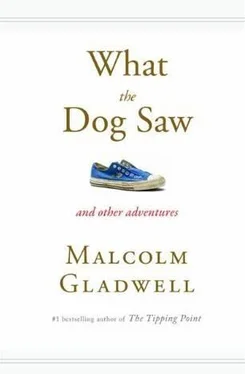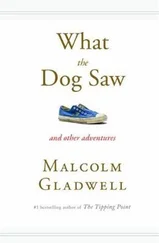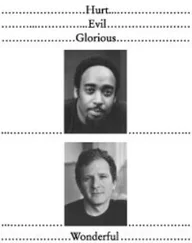In the last thirty years, Ron has invented a succession of kitchen gadgets, among them the Ronco Electric Food Dehydrator and the Popeil Automatic Pasta and Sausage Maker, which featured a thrust bearing made of the same material used in bulletproof glass. He works steadily, guided by flashes of inspiration. In August of 2000, for instance, he suddenly realized what product should follow the Showtime Rotisserie. He and his right-hand man, Alan Backus, had been working on a bread-and-batter machine, which would take up to ten pounds of chicken wings or scallops or shrimp or fish fillets and do all the work – combining the eggs, the flour, the breadcrumbs – in a few minutes, without dirtying either the cook’s hands or the machine. “Alan goes to Korea, where we have some big orders coming through,” Ron explained recently over lunch – a hamburger, medium-well, with fries – in the VIP booth by the door in the Polo Lounge, at the Beverly Hills Hotel. “I call Alan on the phone. I wake him up. It was two in the morning there. And these are my exact words: ‘Stop. Do not pursue the bread-and-batter machine. I will pick it up later. This other project needs to come first.’ ” The other project, his inspiration, was a device capable of smoking meats indoors without creating odors that can suffuse the air and permeate furniture. Ron had a version of the indoor smoker on his porch – “a Rube Goldberg kind of thing” that he’d worked on a year earlier – and, on a whim, he cooked a chicken in it. “That chicken was so good that I said to myself” – and with his left hand Ron began to pound on the table – “This is the best chicken sandwich I have ever had in my life.” He turned to me: “How many times have you had a smoked-turkey sandwich? Maybe you have a smoked-turkey or a smoked-chicken sandwich once every six months. Once! How many times have you had smoked salmon? Aah. More. I’m going to say you come across smoked salmon as an hors d’oeuvre or an entrée once every three months. Baby-back ribs? Depends on which restaurant you order ribs at. Smoked sausage, same thing. You touch on smoked food” – he leaned in and poked my arm for emphasis – “but I know one thing, Malcolm. You don’t have a smoker.”
The idea for the Showtime came about in the same way. Ron was at Costco when he suddenly realized that there was a long line of customers waiting to buy chickens from the in-store rotisserie ovens. They touched on rotisserie chicken, but Ron knew one thing: they did not have a rotisserie oven. Ron went home and called Backus. Together, they bought a glass aquarium, a motor, a heating element, a spit rod, and a handful of other spare parts, and began tinkering. Ron wanted something big enough for a fifteen-pound turkey but small enough to fit into the space between the base of an average kitchen cupboard and the countertop. He didn’t want a thermostat, because thermostats break, and the constant clicking on and off of the heat prevents the even, crispy browning that he felt was essential. And the spit rod had to rotate on the horizontal axis, not the vertical axis, because if you cooked a chicken or a side of beef on the vertical axis the top would dry out and the juices would drain to the bottom. Roderick Dorman, Ron’s patent attorney, says that when he went over to Coldwater Canyon he often saw five or six prototypes on the kitchen counter, lined up in a row. Ron would have a chicken in each of them, so that he could compare the consistency of the flesh and the browning of the skin, and wonder if, say, there was a way to rotate a shish kebab as it approached the heating element so that the inner side of the kebab would get as brown as the outer part. By the time Ron finished, the Showtime prompted no fewer than two dozen patent applications. It was equipped with the most powerful motor in its class. It had a drip tray coated with a nonstick ceramic, which was easily cleaned, and the oven would still work even after it had been dropped on a concrete or stone surface ten times in succession, from a distance of three feet. To Ron, there was no question that it made the best chicken he had ever had in his life.
It was then that Ron filmed a television infomercial for the Showtime, twenty-eight minutes and thirty seconds in length. It was shot live before a studio audience, and aired for the first time on August 8, 1998. It has run ever since, often in the wee hours of the morning, or on obscure cable stations, alongside the get-rich schemes and the Three’s Company reruns. The response to it has been such that within the next three years total sales of the Showtime should exceed a billion dollars. Ron Popeil didn’t use a single focus group. He had no market researchers, R &D teams, public-relations advisers, Madison Avenue advertising companies, or business consultants. He did what the Morrises and the Popeils had been doing for most of the century, and what all the experts said couldn’t be done in the modern economy. He dreamed up something new in his kitchen and went out and pitched it himself.
Nathan Morris, Ron Popeil’s great-uncle, looked a lot like Cary Grant. He wore a straw boater. He played the ukulele, drove a convertible, and composed melodies for the piano. He ran his business out of a low-slung, whitewashed building on Ridge Avenue, near Asbury Park, with a little annex in the back where he did pioneering work with Teflon. He had certain eccentricities, such as a phobia he developed about traveling beyond Asbury Park without the presence of a doctor. He feuded with his brother Al, who subsequently left in a huff for Atlantic City, and then with his nephew S. J. Popeil, whom Nathan considered insufficiently grateful for the start he had given him in the kitchen-gadget business. That second feud led to a climactic legal showdown over S. J. Popeil’s Chop-O-Matic, a food preparer with a pleated, W-shaped blade rotated by a special clutch mechanism. The Chop-O-Matic was ideal for making coleslaw and chopped liver, and when Morris introduced a strikingly similar product, called the Roto-Chop, S. J. Popeil sued his uncle for patent infringement. (As it happened, the Chop-O-Matic itself seemed to have been inspired by the Blitzhacker, from Switzerland, and S.J. later lost a patent judgment to the Swiss.)
The two squared off in Trenton, in May of 1958, in a courtroom jammed with Morrises and Popeils. When the trial opened, Nathan Morris was on the stand, being cross-examined by his nephew’s attorneys, who were out to show him that he was no more than a huckster and a copycat. At a key point in the questioning, the judge suddenly burst in. “He took the index finger of his right hand and he pointed it at Morris,” Jack Dominik, Popeil’s longtime patent lawyer, recalls, “and as long as I live I will never forget what he said. ‘I know you! You’re a pitchman! I’ve seen you on the boardwalk!’ And Morris pointed his index finger back at the judge and shouted, ‘No! I’m a manufacturer. I’m a dignified manufacturer, and I work with the most eminent of counsel!’ ” (Nathan Morris, according to Dominik, was the kind of man who referred to everyone he worked with as eminent.) “At that moment,” Dominik goes on, “Uncle Nat’s face was getting red and the judge’s was getting redder, so a recess was called.” What happened later that day is best described in Dominik’s unpublished manuscript, “The Inventions of Samuel Joseph Popeil by Jack E. Dominik – His Patent Lawyer.” Nathan Morris had a sudden heart attack, and S.J. was guilt-stricken. “Sobbing ensued,” Dominik writes. “Remorse set in. The next day, the case was settled. Thereafter, Uncle Nat’s recovery from his previous day’s heart attack was nothing short of a miracle.”
Nathan Morris was a performer, like so many of his relatives, and pitching was, first and foremost, a performance. It’s said that Nathan’s nephew Archie (the Pitchman’s Pitchman) Morris once sold, over a long afternoon, gadget after gadget to a well-dressed man. At the end of the day, Archie watched the man walk away, stop and peer into his bag, and then dump the whole lot into a nearby garbage can. The Morrises were that good. “My cousins could sell you an empty box,” Ron says.
Читать дальше












